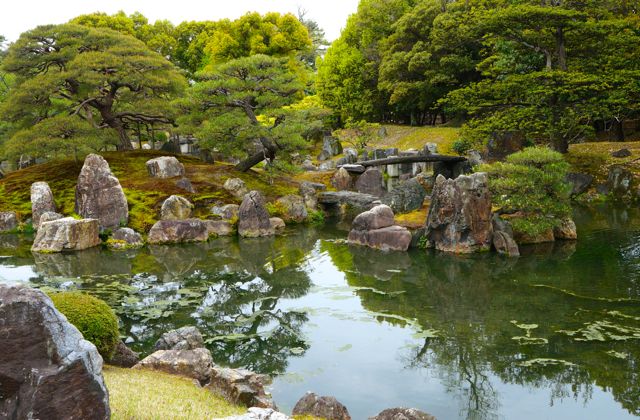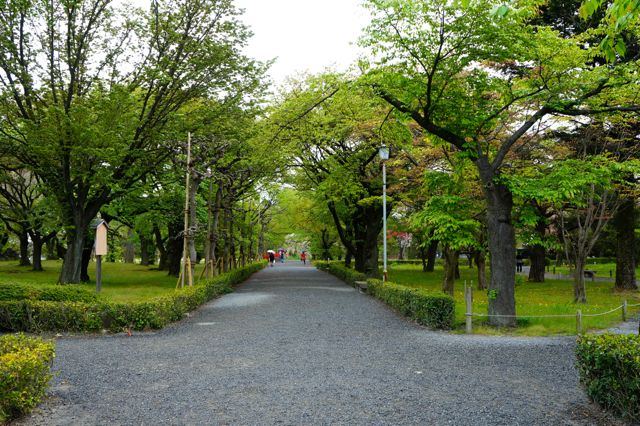▪ Kyoto Home
▪ Things To Do
▪ Getting There
▪ Getting Around
▪ Accommodation
二条城 (Nijōjō) Nijo Castle is one of the 17 assets of Historic Monuments of Ancient Kyoto, which was designated by UNESCO as a World Heritage Site in 1994. It was built in 1603 to protect Kyoto Imperial Palace and as a residence of Tokugawa Ieyasu, the first shogun of the Edo Period, when he visited Kyoto. The castle witnessed not only the rise and fall of the Tokugawa, but also overlooked changes in Japanese History.
Nijo castle grounds are surrounded by stone walls and moat and has two levels of defense against enemy attack – the Ninomaru , which is the second circle of defense, and the Honmaru, which is the main circle of defense.
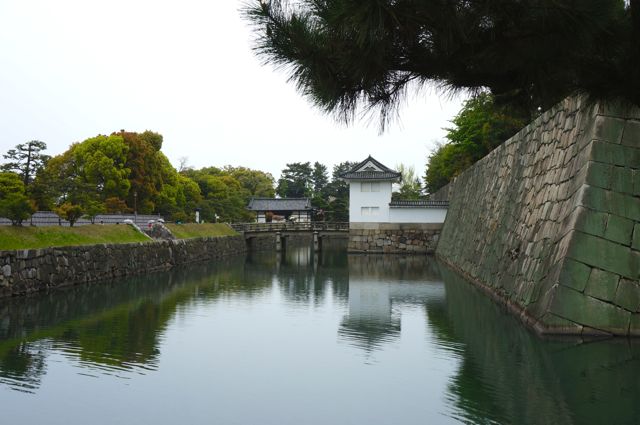 Nijo Castles’s stone walls and moat.
Nijo Castles’s stone walls and moat.
The castle’s main attraction is the Ninomaru Palace, which is the office and residence of the shogun. Visitors entering this palace are asked to take off their shoes in the entrance hall. They will then pass the corridors that are equipped with nightingale floors, which squeak when stepped upon. This serves as an alarm for intruders. The palace buildings possess decorated ceilings and painted walls and each room is decorated with brightly colored sliding screens using gilt. The palace tour is very interesting, however, photography inside the palace is not allowed.
The Honmaru Palace is located in the inner moat. The original palace was lost to fire after the great fire of Kyoto city in 1788. The present-day palace is the old Katsura-no-miya Palace which was located through the Imadegawagomon Gate of the Kyoto Imperial Gardens, and was moved to the grounds of the honmaru from 1893 to 1894. It is not regularly opened to the public, except on special occasions.
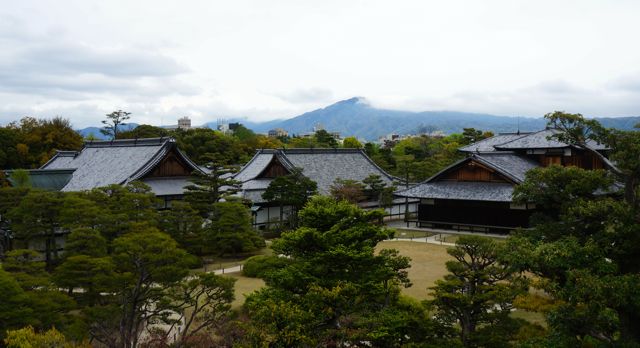 Honmaru viewed from the stone foundation of the former castle keep.
Honmaru viewed from the stone foundation of the former castle keep.
There are three outstanding gardens in Nijo castle – the Ninomaru, Honamaru, and Seiryu-en Gardens. The Ninomaru garden is a traditional Japanese landscape garden which has a large pond, ornamental stones and manicured pine trees. The Honmaru garden was cleared in 1788 due to fire but was rebuilt in 1895 with a Japanese dry landscape style. And the Seiryu-en garden is a recent addition to the palace and constructed in 1965, which is half western and half eastern influenced, to serve as a reception of official guests of the city of Kyoto and as a venue for cultural events.
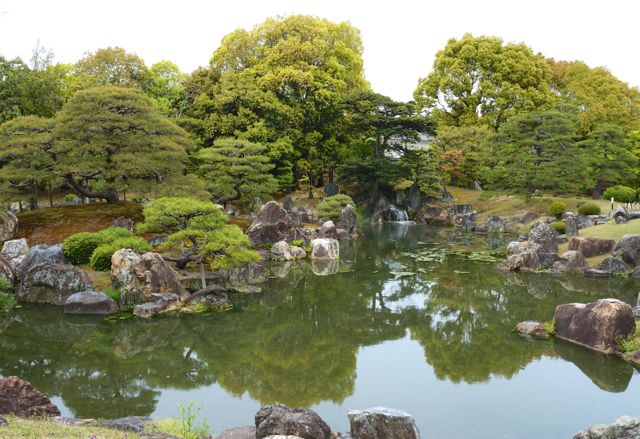 Ninomaru garden with a mini-falls, pond, ornamental stones, and pine trees.
Ninomaru garden with a mini-falls, pond, ornamental stones, and pine trees.
The castle grounds are surrounded by tree-lined walking paths that creates a stunning view especially during spring and autumn seasons.
